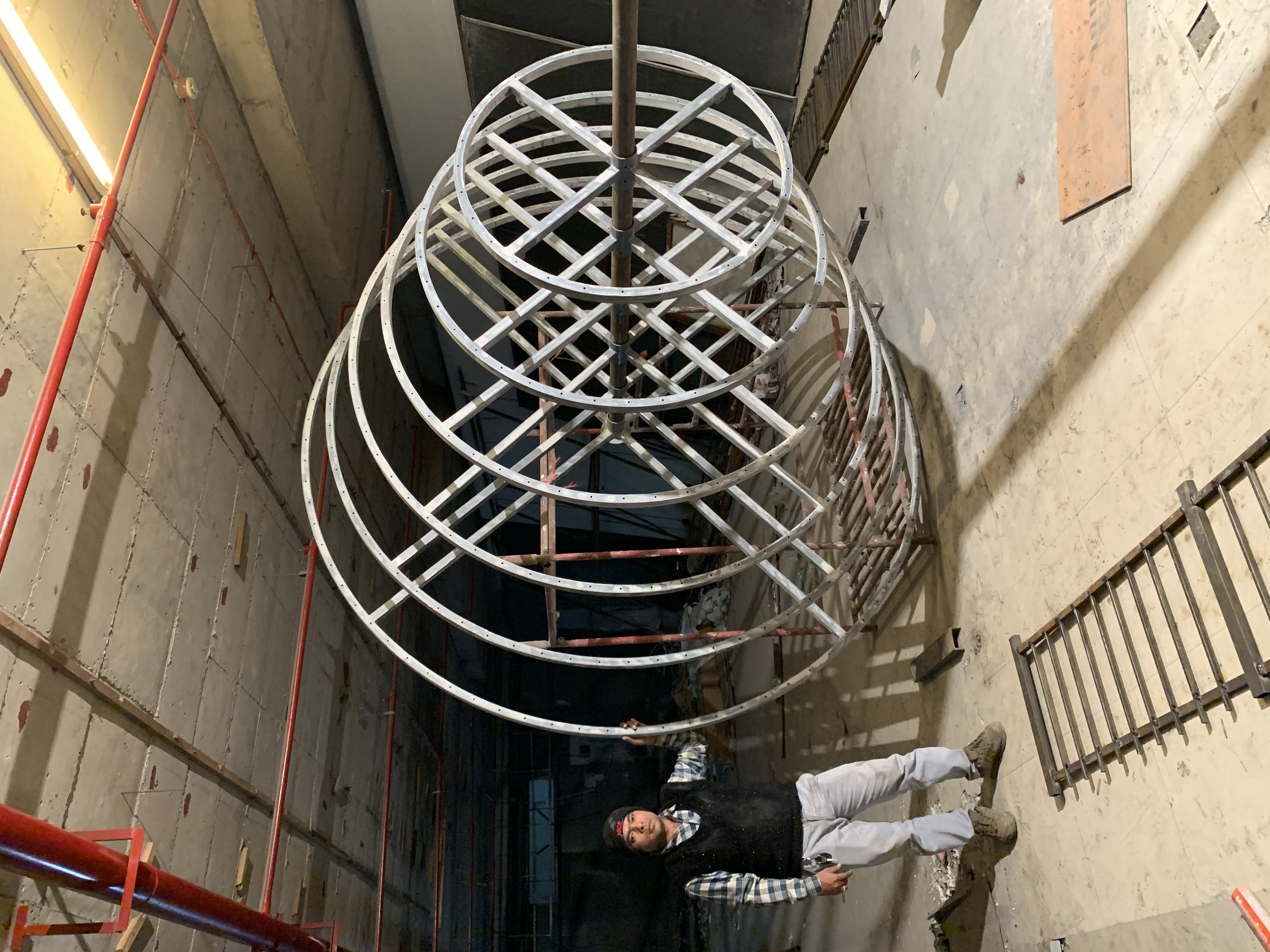


Bloom, 2020, wooden Channaptna toys with wax lacquer in concentric circles and a lotus in Mild Steel with Meenakari enamel in the middle, 15' drop height x 10' diameter
'Bloom' explores nostalgia and childlike curiosities. The installation explores the concept of looking at things from a different POV (point of view); a reversed perspective and creating an engagement that forces the viewer to not only experience but to consciously explore this very personal experience. Channaptna toys originated in the town of Channaptna in the Ramanagara district of Karnataka state, India. The art form traces its roots to the rule of Tipu Sultan, Mysore’s historic ruler, whose patronage to arts in general and to these wooden toys allowed for them to thrive and flourish. Over time though the art became an expensive affair and it subsequently needed the introduction of Japanese doll making techniques to improve productivity and reinvent themselves.
With a similar turn of events in mind and working with the craftsmen of channaptna toys, an installation with a diameter of ten feet and a drop of fifteen feet was created. The scaled up (in size) wooden toys were coated with wax lacquer and the lotus jutting out below in the middle of the construction was made in mild steel with Meenakari enamel. Wood was procured, seasoned, cut into the desired shapes, pruned and carved into toys. The colours were applied and finally polished with wax lacquer.
The design of the installation involved meticulous attention to detail, considering that the vantage point of view was to be from below. It had to also incorporate the weight of the entire installation with the mild steel lotus, wooden parts (Channapatna toys) fixed to hang without any risk to the viewer below. The shift of the viewer’s vantage point was deliberate and so was the scaling up of the toys’ size. As did the vibrant colours to attract the viewer and the design to hold attention. Childlike curiosity raised, the installation taps into individual nostalgia. The purpose is also to remind of the near forgotten art form of Channaptna toys and its craftsmen.
Aesthetics for the installation had to keep in mind the lighting from within the installation and the surfaces around when installed. The six circles (layers) of the installation were meant to look like a part of the whole; protruding down from the top most layer, with reducing diameter for the impact of a collapsible toy. The lotus became the final layer - jutting out, closest to the viewer with its petals enhanced by the colours and the lighting from within. The play of light and shadow leaps out to the viewer in gayful abandon. The original colour palette of the toys retained for continuation of their legacy. The central rod, yellow in colour, like the stem of an upside down lotus, holds the entire installation together, makes space for the electrical connections, and lends strength and connectivity to the installation 'Bloom'.




